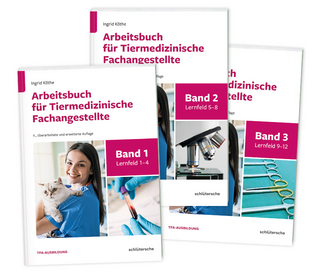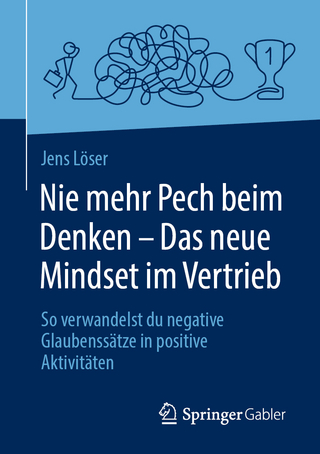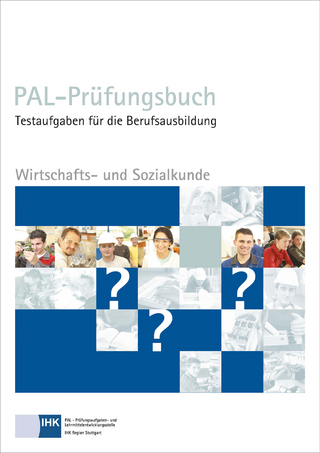
Integrated Content Literacy
Kendall/Hunt Publishing Co ,U.S. (Verlag)
978-0-7575-2707-4 (ISBN)
- Titel z.Zt. nicht lieferbar
- Versandkostenfrei innerhalb Deutschlands
- Auch auf Rechnung
- Verfügbarkeit in der Filiale vor Ort prüfen
- Artikel merken
Six unique chapter sections entitled "From the Pages of our Lives" written by various educators, demonstrate personal commitment and love of learning, which adds meaningful context and perspective to the concepts and methods in this book.
The teaching strategies in each chapter are modeled with cognitive maps, embedded workshops and vignettes from content classrooms. A glossary and extensive references help readers organize and understand the materials. Includes information on religion in the public school curriculum. Each chapter is complete in itself, making it useful in staff development workshops.
Integrated Content Literacy has several features that make it unique from other texts:
The tool box of literacy and learning strategies situates the reader as the learner.
Each chapter includes a sampling of specific measurable literacy standards established by individual states.
"Study Learning" is the authors' own model of interactive study skills that moves in a sequence through all aspects of this important content strategy.
Word study references
Content IRI reports
Directed Reading/Thinking Activities
Brief Table of Contents
Part I SETTING THE STAGE
Chapter One: A Toolbox of Reading and Learning Strategies
Taking and Making Notes
Teaching Outlining Skills
Skills Needed for Good Note Taking and Making
Abbreviations and Symbols, Listening and Following Directions
Chapter Two: Reading Rate Adaptability
Levels and Rates
The Eye and Mind Connection
The Multiple Reading Process (MRP)
The Eight Steps to Previewing a Large Text
A Weekend with My Grandfather
Chapter Three: A Frame of Reference: Literacy, Diversity, Censorship, and the Mature Reader
Schemata for the Concept of Literacy
Learning to Read vs. Reading to Learn
Introduction to Diversity
Censorship Concerns
Qualities of the Mature Reader
Evangelina Can Read
Chapter Four: Promoting Affective Dimensions: The Engaged Reader
Taxonomy of the Affective Domain
Attitudes and Interests
Assessing Atttitudes and Interests
Values Clarification
Engaging All Students: Concerns and Opportunities
Strategies for Engagement
Sharing Is Healing
Part II THE PROCESS OF COMPREHENSION AND ITS ASSESSMENT
Chapter Five: Matching Print with Reader:
Part One: Text Assessment
Plain Language Laws
Readability Defined
Textual Factors: What Makes Something Easy or Difficult to Read?
Levels of Understanding
Tools for Measuring Readability
Readability Checklists
Qualitative Assessment of Text Difficulty
Student Input/Personal Factors
The Readability Assessment Triangle
Textbook Analysis: More Than Just Readability
Chapter Six: Matching Print with Reader:
Part Two:Authentic Reader Assessment
Definitions and Standards
Standards for the Assessment of Reading and Writing
Classroom Assessments: Standardized Tools
Informal Whole-Class Assessment
Student, Parent, and Community Input
Chapter Seven: Making Meaning, Reflecting, and Remembering
The Process of Making Meaning
Taxonomies
Directed Reading-Thinking Activities: The Multiple Reading Process Revisited
Setting the Stage: Pre-Reading Strategies
During-Reading Strategies
Post-Reading
Strategies to Enhance Retention of What Is Read
Chapter Eight: Writing Process, Traits, and Patterns for Content Area Learning
The Writing Process
The Link Between Assessment and Writing to Learn
Analytic Traits of Writing
Content-Area Writing Tasks, Assignments,and Activities
Writing My Way to My Family's History
Part III SPECIALIZED TOOLS FOR CONTENT NEEDS
Chapter Nine: Vocabulary: Building Blocks to Understanding and Enjoyment
Language Acquisition and Word Study
Specifics Types of Word Study
CSSD for Attacking New Words in All Content Areas
Teaching Strategies: Before, During, and After
Playing with Words: Fun for All!
Ten Things to Remember When Teaching Vocabulary
Vocabulary Tools and Games on the Internet
Chapter Ten: Study Learning
Search and Locate Information
Receive and Organize Information
Interpret and Apply Information
Special Strategies
Check/Recall/Monitor Information
Pulling It All Together
Testing
Chapter Eleven: Classroom Organization and Approaches
Organizational Concerns
Teaching Formats
Approaches
Organizing for Diversity Responsive Instruction
Approaches to Bilingual Education
Technology: Organizing Instruction with Old Friends
My High School's Transformational Power
Chapter Twelve: Integrating Literature into Content Classrooms
Rosenblatt's Efferent and Aesthetic Reading: Reader Response Theory
Motivating and Restorative Qualities of Literature
Importance of Reading Rate Adaptability
Multicultural Literature for Understanding and Transformation
Locating Appropriate Materials
Other Sources of Help in Selecting Appropriate Trade Books
Content Classroom Activities
The Truth, Whispered or Shouted. . .
Appendix A: Directed Reading/Thinking Activity
Appendix B: Content IRI Report
Appendix C: CIRI for Chemistry and Math: For Use in Triangulation of Assessments
Appendix D: Structural Analysis: Words and Affixes
Appendix E: Word Study References
Appendix F: Religion in the Public School Curriculum: Questions and Answers
Appendix G: Using Advance Organizers to Enhance the Processing of Texts
Glossary
Author Index
Subject Index
| Erscheint lt. Verlag | 22.6.2011 |
|---|---|
| Verlagsort | Iowa |
| Sprache | englisch |
| Themenwelt | Schulbuch / Wörterbuch ► Erwachsenenbildung |
| Sozialwissenschaften ► Pädagogik ► Berufspädagogik | |
| ISBN-10 | 0-7575-2707-8 / 0757527078 |
| ISBN-13 | 978-0-7575-2707-4 / 9780757527074 |
| Zustand | Neuware |
| Haben Sie eine Frage zum Produkt? |
aus dem Bereich


